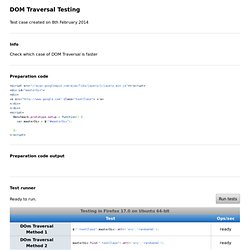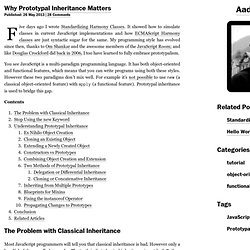

Essential JavaScript Design Patterns For Beginners. I would like to thank Rebecca Murphey for inspiring me to open-source this mini-book and release it for free download and distribution - making knowledge both open and easily available is something we should all strive for where possible. I would also like to extend my thanks to the very talented Alex Sexton who was kind enough to be the technical reviewer for this publication.
I hope that it helps you learn more about design patterns and the usefulness of their application to JavaScript. Volume 2 of Essential JavaScript Design Patterns is currently being written and will be more detailed than this first edition. The ETA for it's online release is late Q4, 2011. For more detailed coverage of specific patterns, you may be interested in my posts on the Pub/Sub (Observer) or Decorator patterns.
At the beginning of this book I will be focusing on a discussion about the importance and history of design patterns in any programming language. Patterns are not an exact solution. DOM Traversal Testing. Info Check which case of DOM Traversal is faster Preparation code <script src="//ajax.googleapis.com/ajax/libs/jquery/1/jquery.min.js"></script><div id="masterDiv"><div><a src=" class="testClass"></a></div></div><script> Benchmark.prototype.setup = function() { var masterDiv = $("#masterDiv"); };</script> Preparation code output Test runner Warning!

Java applet disabled. Ready to run. Compare results of other browsers Chart type: bar, column, line, pie, tableFilter: popular, all, desktop, family, major, minor, mobile, prerelease Revisions You can edit these tests or add even more tests to this page by appending /edit to the URL. Javascript Adv. Understand JavaScript’s “this” With Clarity, and Master It. (Also learn all the scenarios when this is most misunderstood.)

Prerequisite: A bit of JavaScript.Duration: about 40 minutes. The this keyword in JavaScript confuses new and seasoned JavaScript developers alike. This article aims to elucidate this in its entirety. By the time we make it through this article, this will be one part of JavaScript we never have to worry about again. We will understand how to use this correctly in every scenario, including the ticklish situations where it usually proves most elusive. We use this similar to the way we use pronouns in natural languages like English and French.
If we use person.firstName and person.lastName, as in the last example, our code becomes ambiguous. Just like the pronoun “he” is used to refer to the antecedent (antecedent is the noun that a pronoun refers to), the this keyword is similarly used to refer to an object that the function (where this is used) is bound to. JavaScript’s this Keyword Basics The use of this in the global scope. Why Prototypal Inheritance Matters. Five days ago I wrote Standardizing Harmony Classes.

It showed how to simulate classes in current JavaScript implementations and how ECMAScript Harmony classes are just syntactic sugar for the same. My programming style has evolved since then, thanks to Om Shankar and the awesome members of the JavaScript Room; and like Douglas Crockford did back in 2006, I too have learned to fully embrace prototypalism.
You see JavaScript is a multi-paradigm programming language. It has both object-oriented and functional features, which means that you can write programs using both these styles. However these two paradigms don’t mix well. Contents The Problem with Classical Inheritance Most JavaScript programmers will tell you that classical inheritance is bad. The problem with JavaScript is that since any function can be used as a constructor we need to distinguish a normal function call from a constructor function call; and this is achieved using the new keyword. Consider the above program.